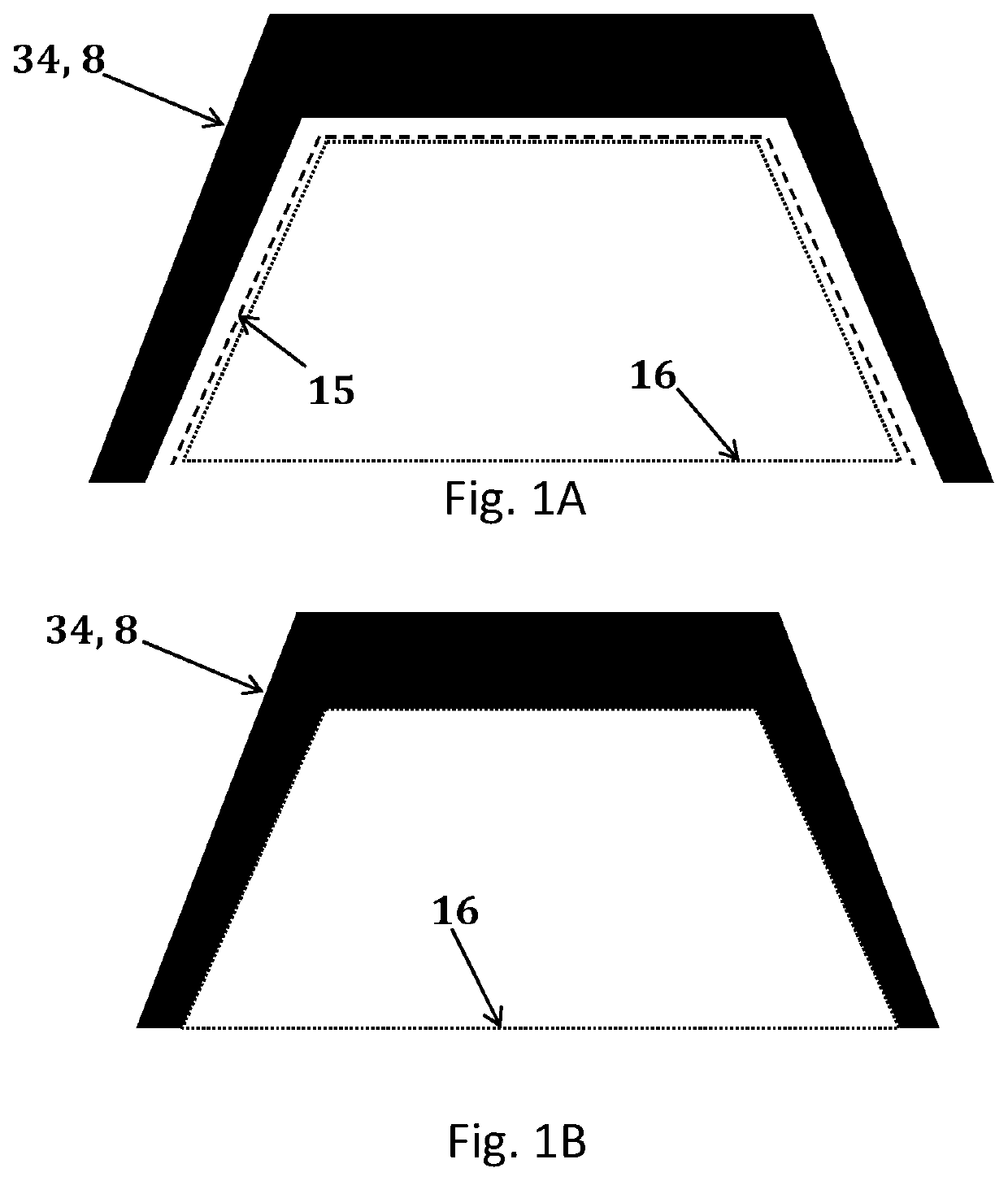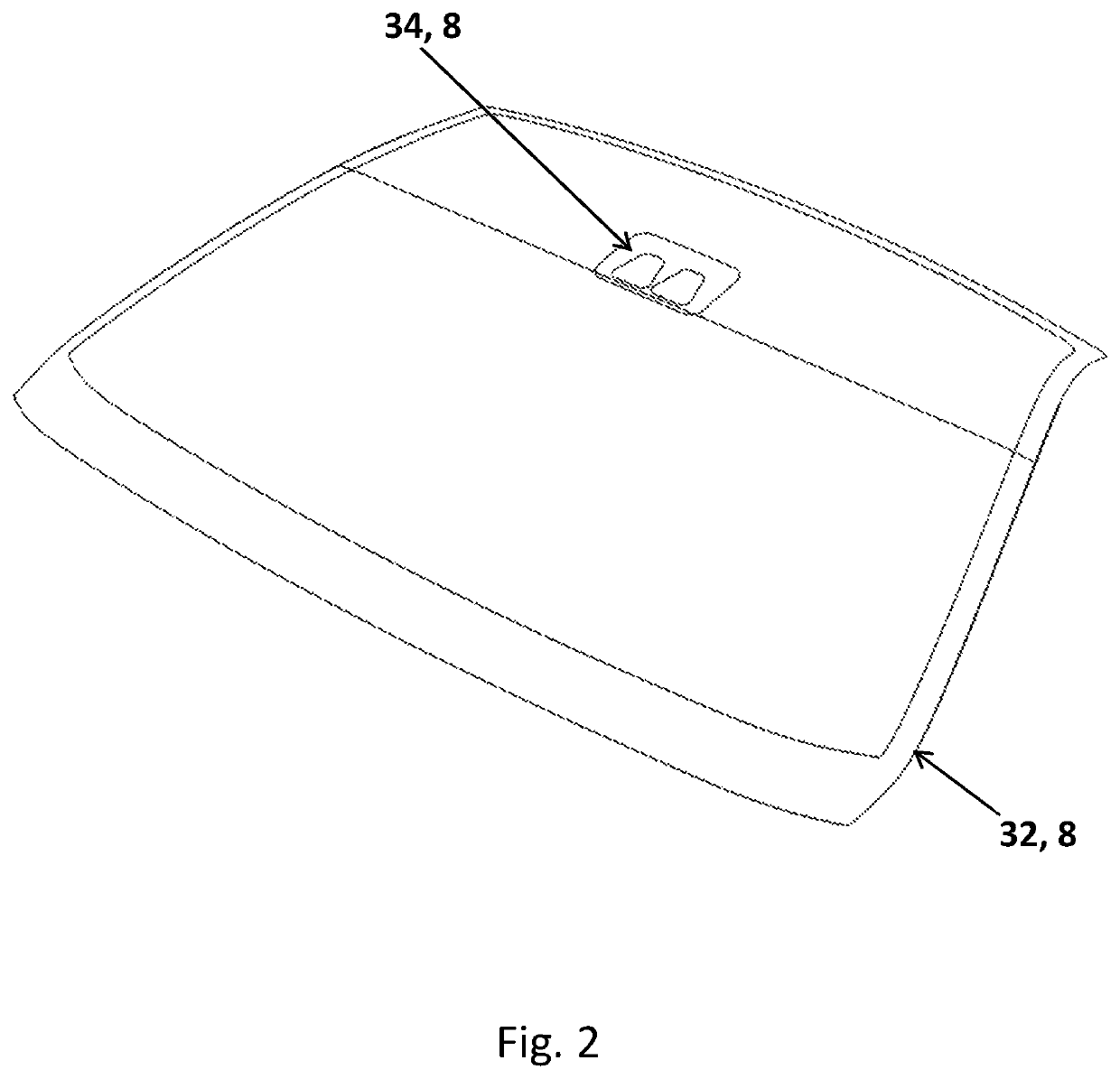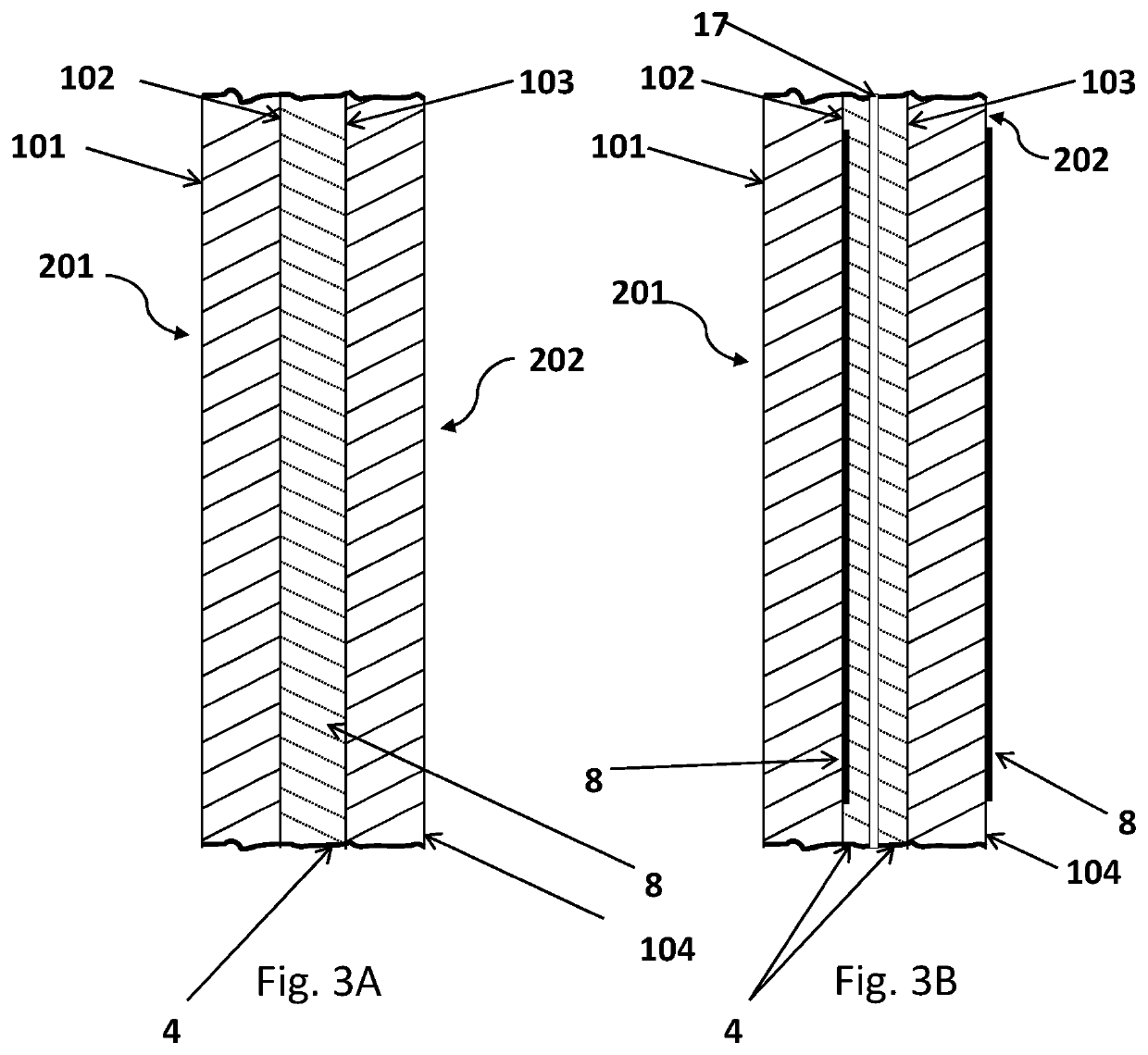Glass laminate with printed obscuration having superior strength and optical quality
a technology of printed obscuration and glass laminate, which is applied in the direction of transportation and packaging, coatings, chemistry apparatuses and processes, etc., to achieve the effects of reducing residual stress, high yield and high strength
- Summary
- Abstract
- Description
- Claims
- Application Information
AI Technical Summary
Benefits of technology
Problems solved by technology
Method used
Image
Examples
embodiment 1
[0103]The windshield of FIG. 8 comprising a ceramic frit black band 32 and a camera obscuration 34 printed by means of an organic black ink after heating and bending of the glass and printed by means of a mask and spray system on the second surface of glass 102.
embodiment 2
[0104]The windshield of FIG. 8 comprising a ceramic frit black band 32 and a camera obscuration 34 printed by means of an organic black ink after heating and bending of the glass printed by means of a mask and spray system on the second surface of glass 102 and fourth surface of glass 104.
embodiment 3
[0105]The windshield of FIG. 8 comprising a ceramic frit black band 32 and a Camera obscuration 34 printed by means of an organic black ink after heating and bending of the glass printed by means of a mask and spray system on the second surface of glass 102 and fourth surface of glass 104 and further comprising a wedge / shaped plastic interlayer.
PUM
| Property | Measurement | Unit |
|---|---|---|
| Angle | aaaaa | aaaaa |
| Angle | aaaaa | aaaaa |
| Angle | aaaaa | aaaaa |
Abstract
Description
Claims
Application Information
 Login to View More
Login to View More - R&D
- Intellectual Property
- Life Sciences
- Materials
- Tech Scout
- Unparalleled Data Quality
- Higher Quality Content
- 60% Fewer Hallucinations
Browse by: Latest US Patents, China's latest patents, Technical Efficacy Thesaurus, Application Domain, Technology Topic, Popular Technical Reports.
© 2025 PatSnap. All rights reserved.Legal|Privacy policy|Modern Slavery Act Transparency Statement|Sitemap|About US| Contact US: help@patsnap.com



